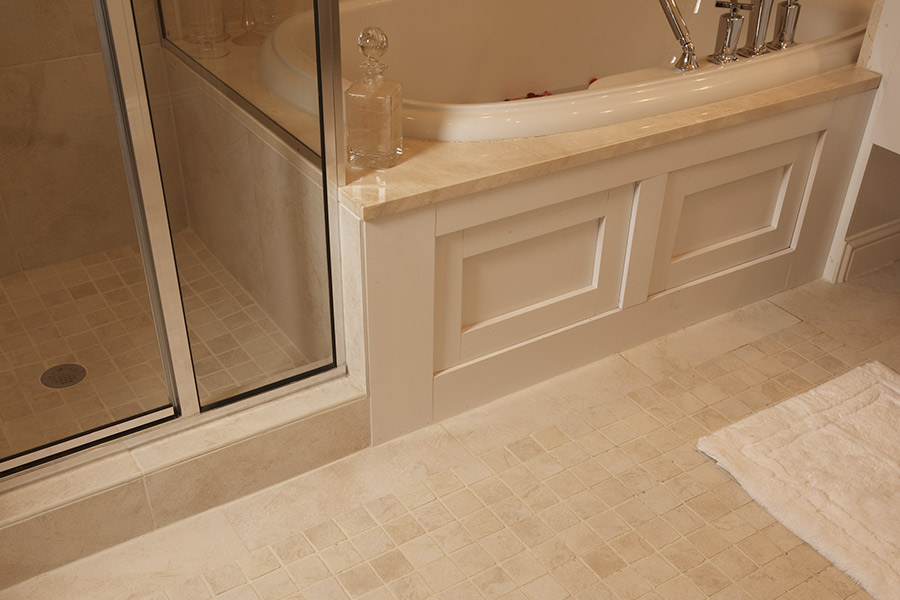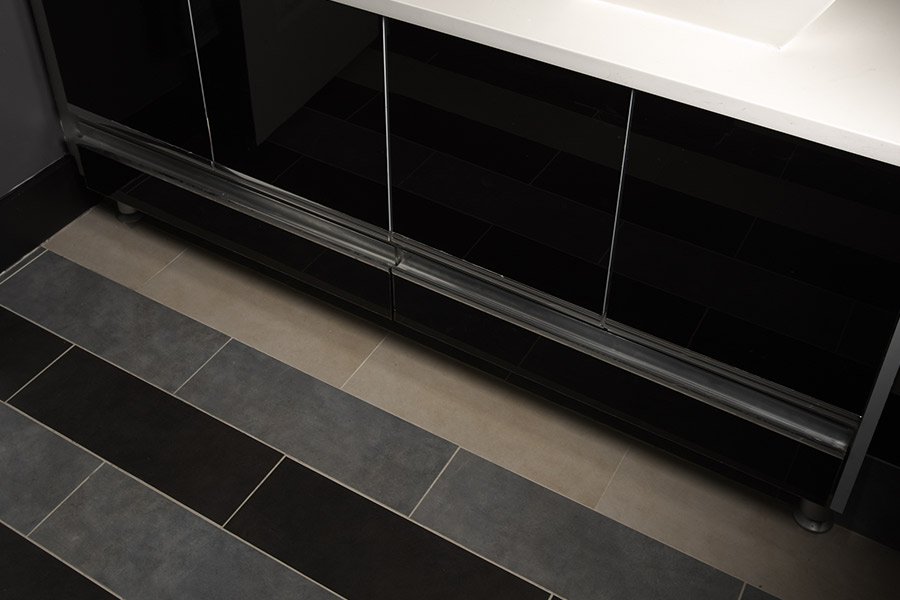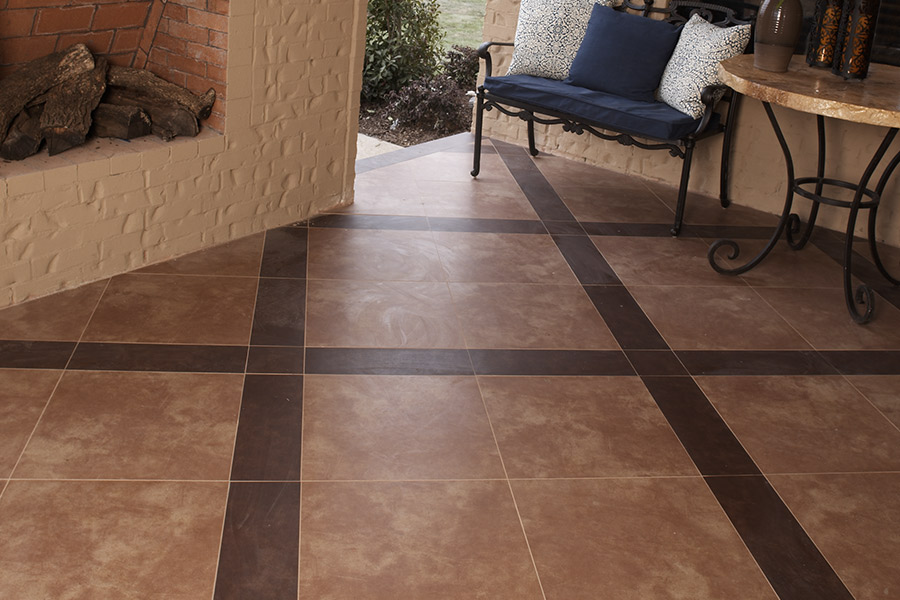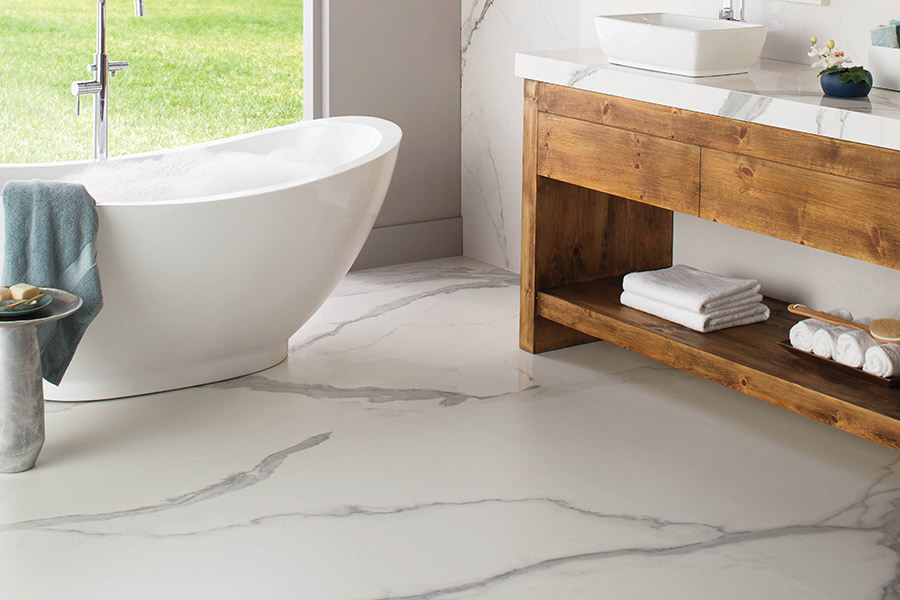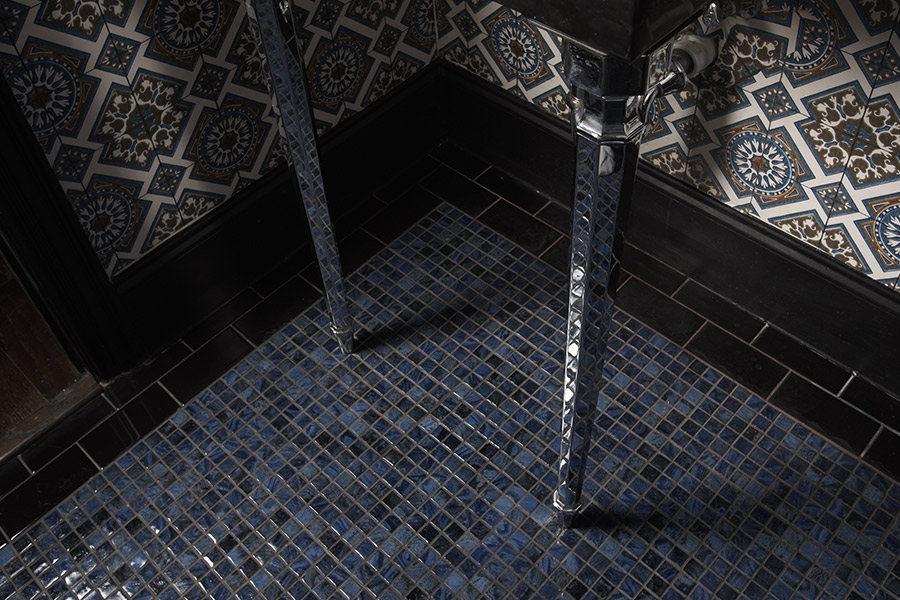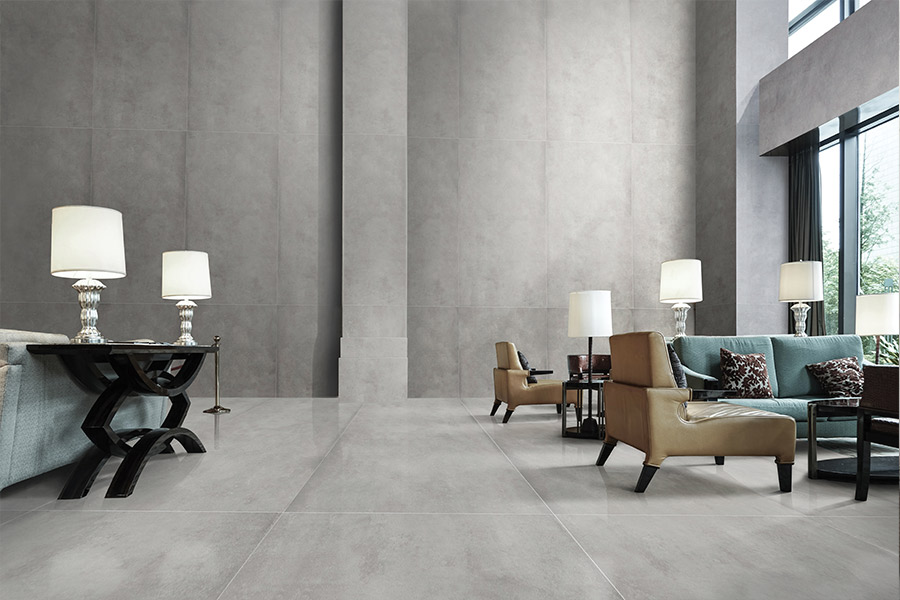Enhance your home with stunning tile flooring
Tile flooring is an exceptional choice for homeowners and businesses looking for a durable, stylish, and versatile flooring option. Renowned for its resilience and aesthetic flexibility, tile flooring comes in various materials, colors, and designs, making it a suitable match for various interior styles. This guide delves into the intricacies of tiles and highlights the reasons why they could be the perfect floor covering for your space.
Ceramic tile vs. porcelain tile: understanding the difference
Tile flooring often comes down to two popular materials: ceramic and porcelain. Both are made from natural clay and fired in kilns, but their characteristics differ significantly due to their manufacturing process and composition.
- Ceramic tile is made from a mixture of clays and other natural materials. These tiles are known for their ease of cutting and installation, making them a favorite for DIY projects. Ceramic tiles are generally softer and less dense compared to porcelain tiles, making them less suitable for high-traffic areas but ideal for wall applications and light to moderate floor traffic.
- Porcelain tile, on the other hand, is made from a more refined clay and fired at higher temperatures. This process makes porcelain tiles denser, less porous, and more durable than ceramic tiles. They are well-suited for high-traffic areas, outdoor spaces, and environments with extreme temperature changes. Porcelain tiles are more water-resistant, making them ideal for bathrooms, kitchens, and outdoor applications.
Get in touch
Why choose tile flooring? Top benefits and considerations
Tile flooring is not just about aesthetics; it's also about durability, maintenance, and versatility. Here are some key reasons to consider tile flooring for your space:
- Durability and longevity: Tile floors are incredibly durable and can withstand high traffic and the wear and tear of everyday life. When properly installed and cared for, tile flooring can last for decades.
- Low maintenance: Tiles are relatively easy to clean and maintain. Regular sweeping and mopping with a mild detergent are usually enough to keep your tile floors looking new.
- Water resistance: Particularly with porcelain tiles, tile flooring offers excellent water resistance, so it's an ideal choice for bathrooms, kitchens, and even outdoor spaces.
- Variety of styles and designs: With advancements in manufacturing technologies, tiles now come in various colors, patterns, and sizes. This variety allows for endless design possibilities, enabling you to create a unique look for your space.
- Health and hygiene: Tiles do not harbor dust mites, allergens, or bacteria, so they're a hygienic option for homes and businesses. They are an excellent flooring choice for individuals with allergies or asthma.
- Eco-friendly options: Many tiles are made from natural materials, and some contain recycled content. Their long lifespan also makes them a more sustainable flooring option.
Visit our tile store in Albuquerque, NM
Tile flooring offers a blend of durability, style, and practicality that few other flooring options can match. Whether you opt for the classic appeal of ceramic tiles or the robustness of porcelain, tile flooring is a wise investment that enhances the aesthetic and functional value of your space.
Contact Enchantment Carpet whenever you're ready to get your dream flooring. Our tile stores in Albuquerque, NM, serve Albuquerque and surrounding areas.
Contact Enchantment Carpet whenever you're ready to get your dream flooring. Our tile stores in Albuquerque, NM, serve Albuquerque and surrounding areas.

